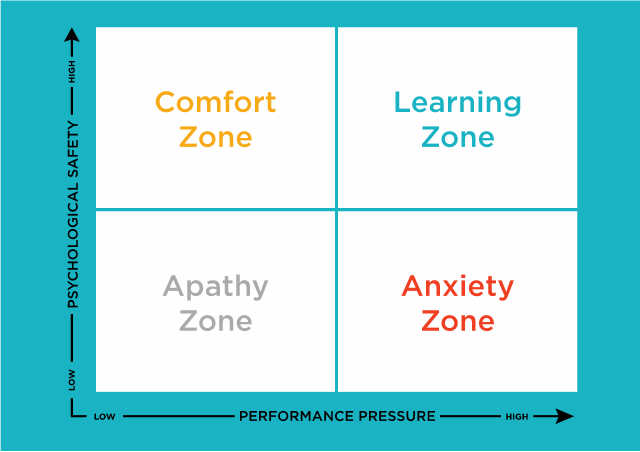Topic 2.4: Harnessing team strengths through psychological safety
As we noted in Module 1, working with strengths tends to produce better results than focusing on people’s weaknesses. It’s also a useful way of working positively with differences and diversity.
Marcus Buckingham (2006, p132) suggests “The One Thing great managers know is the need to discover what is unique about each person and to capitalize on this uniqueness. Great managers serve as intermediaries between the individual and the company, and, like all intermediaries, they perform their role well only when they perform it one on one”.[1]
Again, we can see the links to emotional intelligence: part of self-awareness is knowing our own strengths; part of social awareness is knowing others’ strengths; part of relationship management is finding ways to work with those strengths in teams. We’ll look at this further in Module 5 where we explore Managing and Developing Others.
Required Activity
20 min
Write down the names of at least five people you work with frequently – whether or not you consider yourself or them part of a ‘team’.
For each person you have identified, list at least one strength you have observed in them. (You may want to refer back to the strengths exercise in Module 1 for some prompts.)
- Where do you see them using these strengths?
- Can you see opportunities for them to use them more widely or frequently?
- What can you do to support them in using their strengths more?
- If you are in a position to do so, create some opportunities for these people to use their strengths more and see what happens.
Psychological Safety and Team Performance
Have you ever been in a work situation where you feel completely at ease and relaxed in sharing your ideas and contributing to group conversations; yet within another meeting – even perhaps in the same organisation – you feel you hold back from stating your views openly?
Professor Amy Edmondson from Harvard University is intrigued by this idea of psychological safety and has studied the impact on team learning and organisational learning. Edmondson suggests that teams that learn and innovate require high levels of psychological safety alongside high levels of performance accountability. The graphic below highlights the various ‘zones’ that teams may find themselves in in terms of their collective performance dependent on their sense of psych safety and performance pressure.
These insights remind us of the importance of positive relationships within teams and groups to ensure people feel comfortable to speak up.

Edmondson suggests that leaders and managers can do three things deliberately to enhance learning and team performance:
| Frame the work as a learning problem not just an execution problem | ‘We haven’t done this before. We might have to experiment / try some things out.’ |
| Acknowledge your own fallibility | ‘What might I have missed?’ ‘What advice do you have for me?’ |
| Model curiosity | ‘What questions should we be asking?’ |
Required Activity
20 mins
Watch Amy Edmondson’s TED talk and capture your thoughts on the phenomena of psychological safety and team performance.
Recommended Reflection
20 min
- If you were observing your work teams as an ‘outsider’, what would you notice?
Deeper Learning Activity
20 min
- Do you believe that in those settings people were completely free to be themselves and share their views?
- Why? Why not?
- What specific actions of those in positions of leadership and influence (including yourself!) would enhance psychological safety in these settings?
- What would be the consequences is psychological safety was enhanced?
- Buckingham, M. (2005). The One Thing You Need to Know: ... About Great Managing, Great Leading, and Sustained Individual Success. Simon & Schuster. ↵

